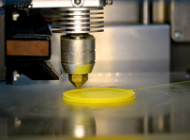
If you are starting out with 3D printing, it is important to know what material you want to work with. There are various materials used in 3D printing. All of them have different characteristics and can be used for specific parts.
One of the most commonly used material today is plastic. It is also known to be the leading material used in 3D printing. It is also the best choice for manufacturers since it is relatively inexpensive.
However, it is important to know and decide if using plastic as a 3D printing material is worthwhile for their project. To understand it better, below is a beginners’ guide to plastic 3D printing.
Plastic 3D printing basics
Here is an overview of the 3d printing technologies that use plastic and the different types of plastic that are commonly used nowadays.
Printing technologies that use plastic
There are specific technologies that use plastic as a material. Here are some of them:
-
FDM
FDM is one of the most common 3D printing technologies that uses plastic. It is used in different industries such as automotive and consumer goods manufacturing. This method utilises some common plastics such as PLA, ABS, and PETG.
-
SLA
SLA is used if you want your models to have smooth surface and high precision. It is also used for printing 3D elastic parts and transparent plastics, casting wax and high-quality surface models.
-
PolyJet
3D parts that are printed using PolyJet technology usually have high service quality. This is because PolyJet is a more controlled process compared to other printing technology.
-
SLS
Plastic parts that are printed using SLS are commonly dense and have high stability. SLS is generally used for printing spare parts, prototypes and functional components.
Common types of 3D plastic materials
Here is a list of the common types of 3D plastic material. This will describe the differences between each plastic material.
-
PLA (Polylactic Acid)
This type of plastic material is identified to be a “go-to plastic material”. This is because it is easy to use, inexpensive and has dimensional accuracy. PLA is also biodegradable. It is made from biological materials such as sugarcane or cornstarch.
The downside of PLA is that it degrades over time and somewhat brittle. It has also a rougher surface than ABS.
-
ABS (Acrylonitrile Butadiene Styrene)
ABS is a strong plastic material. Although it is tough, it is easy to shape because it is malleable at about 220° C. This material is also water and chemical resistant. However, it can produce an unpleasant smell when heated. It is also not suitable for outdoor use.
-
PC (Polycarbonate)
PC is known to be a durable material for 3D printing. It is also noted to have high impact resistance and excellent heat resistance. Polycarbonate is also hygroscopic. This means that it will actively absorb moisture from air.
-
Nylon
Nylon, also known as polyamide, is used by engineers and designers if the object requires both strength and flexibility. If you consider the object to have colour, nylon is also the best choice. This type of material is hygroscopic. It absorbs liquid; thus, the user can leave it in liquid fabric dyes and take on its specific colour.
Plastic is known to be the most used material in the 3D printing industry. But why is this material widely used by engineers and designers? Below are some of the reasons.
Advantages of Plastic 3D printing
One of the biggest advantages of 3D printing with plastic is its price. Plastic materials are relatively inexpensive compared to other 3D printing materials such as gold, silver, stainless steel, etc.
Using plastic is also the best solution for printing larger 3D parts. It is possible to have well-defined dimensions when designing 3D parts using plastics. Furthermore, engineers can directly print accurate and custom-made parts using plastic.
Plastic materials are useful in different sectors. It is considered to be a great asset for several industries. For instance, 3D printed parts are used to create medical tools or even 3D models of organs.
Plastic 3D printing can also be used in automotive industry for services such as car parts replacement. 3D plastic parts are also used in industries such as aerospace industry and architecture.
Disadvantages of Plastic 3D printing
Plastic 3D printing is widely used nowadays because its popularity and affordability. However, using this type of material has also drawbacks.
One of the disadvantages of using plastic is the increasing amount of wastage. 3D printing machines can leave unused or excess plastic materials in its print beds. These plastic by-products will end up in landfills which affects the environment.
Conclusion
Plastic is a type of good starter material for 3D printing beginners. This guide can help you understand more about plastic 3D printing and why plastic is considered as the leading 3D printing material. On the other hand, using plastic 3D printing could be of great advantage for your company because it is cost-effective and perfect for beginners.
For those who are interested in 3D printing plastic parts, you can outsource the job to a trustworthy 3D printing service provider. They can offer services such as custom 3d printing using plastic.








